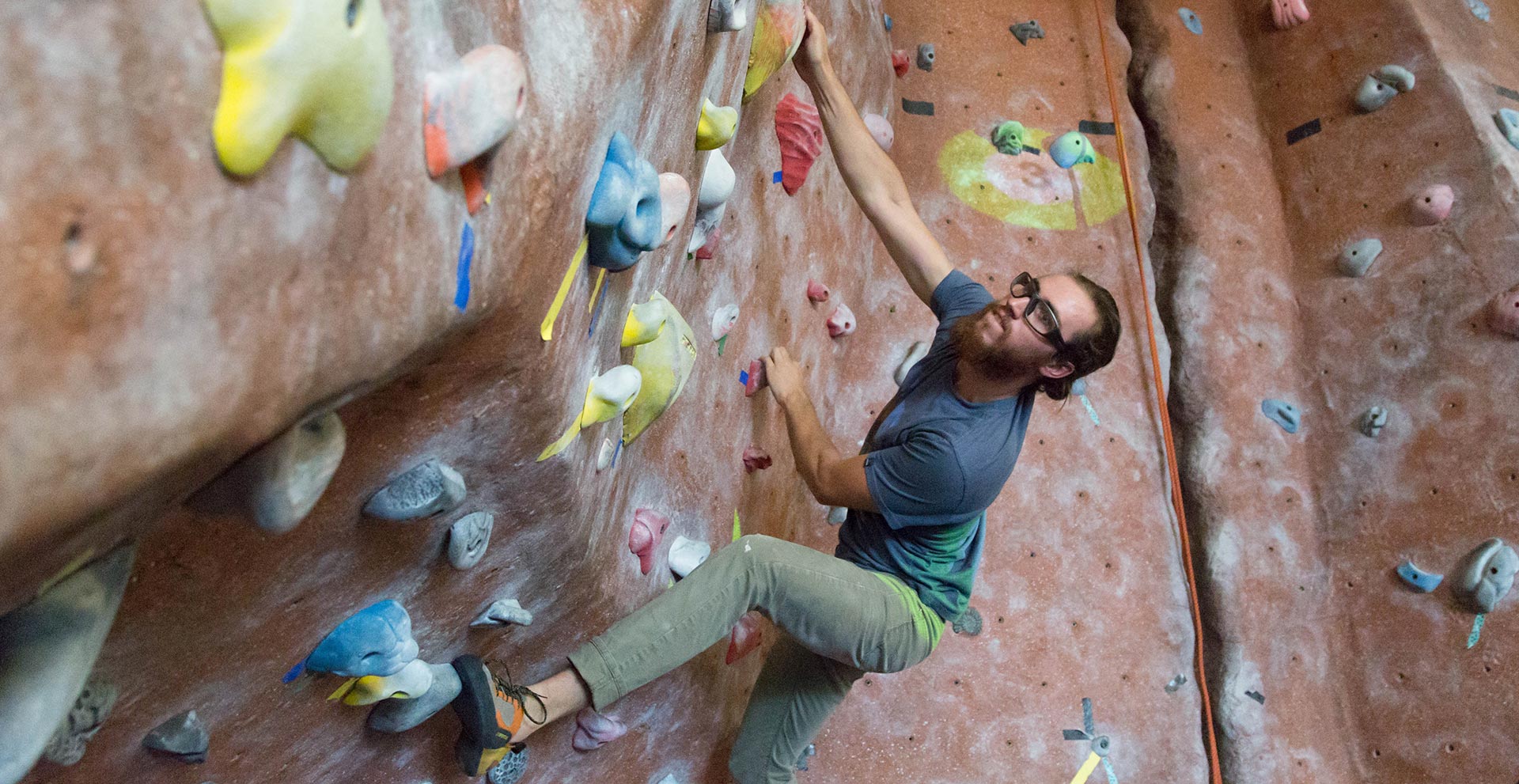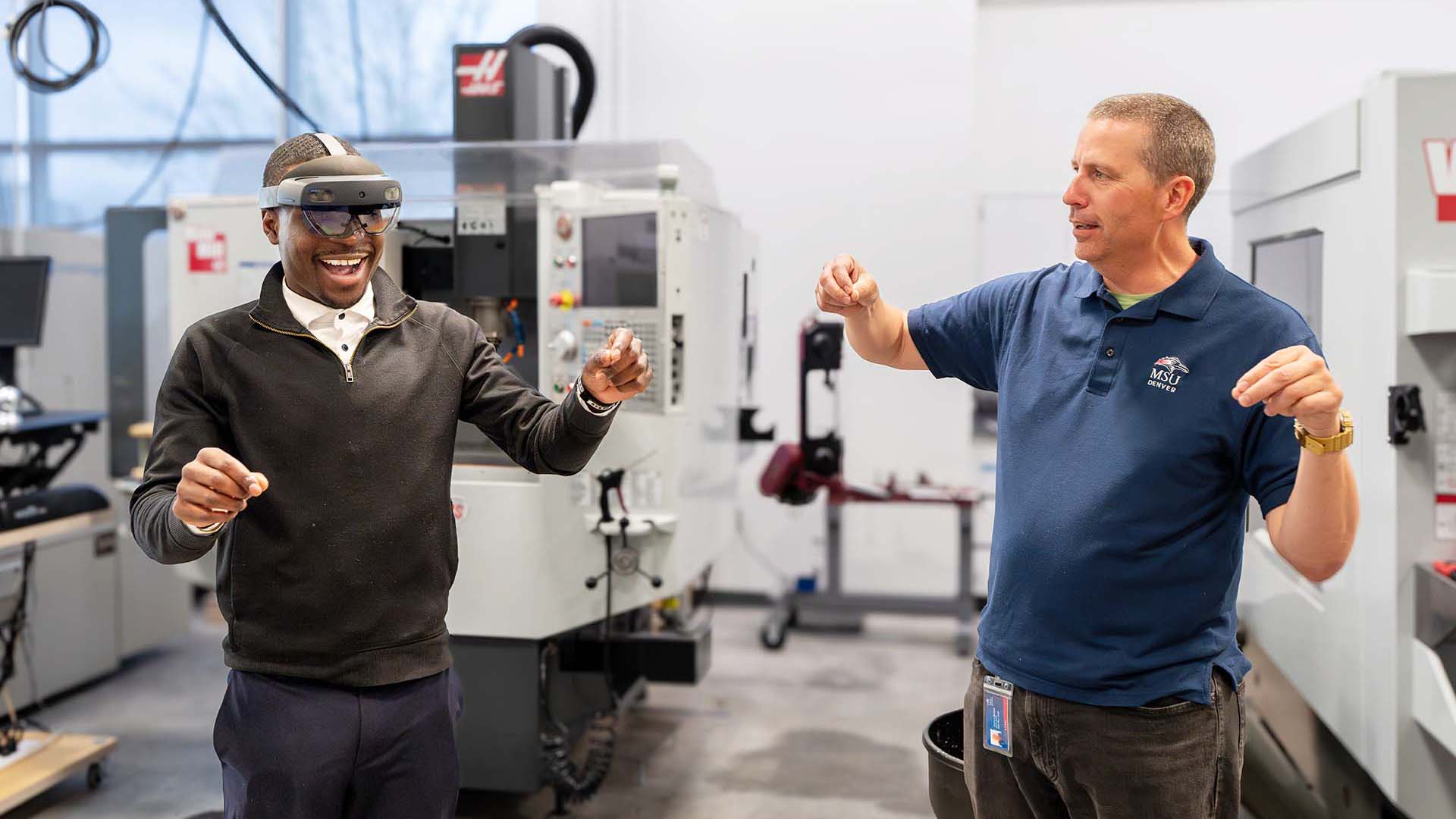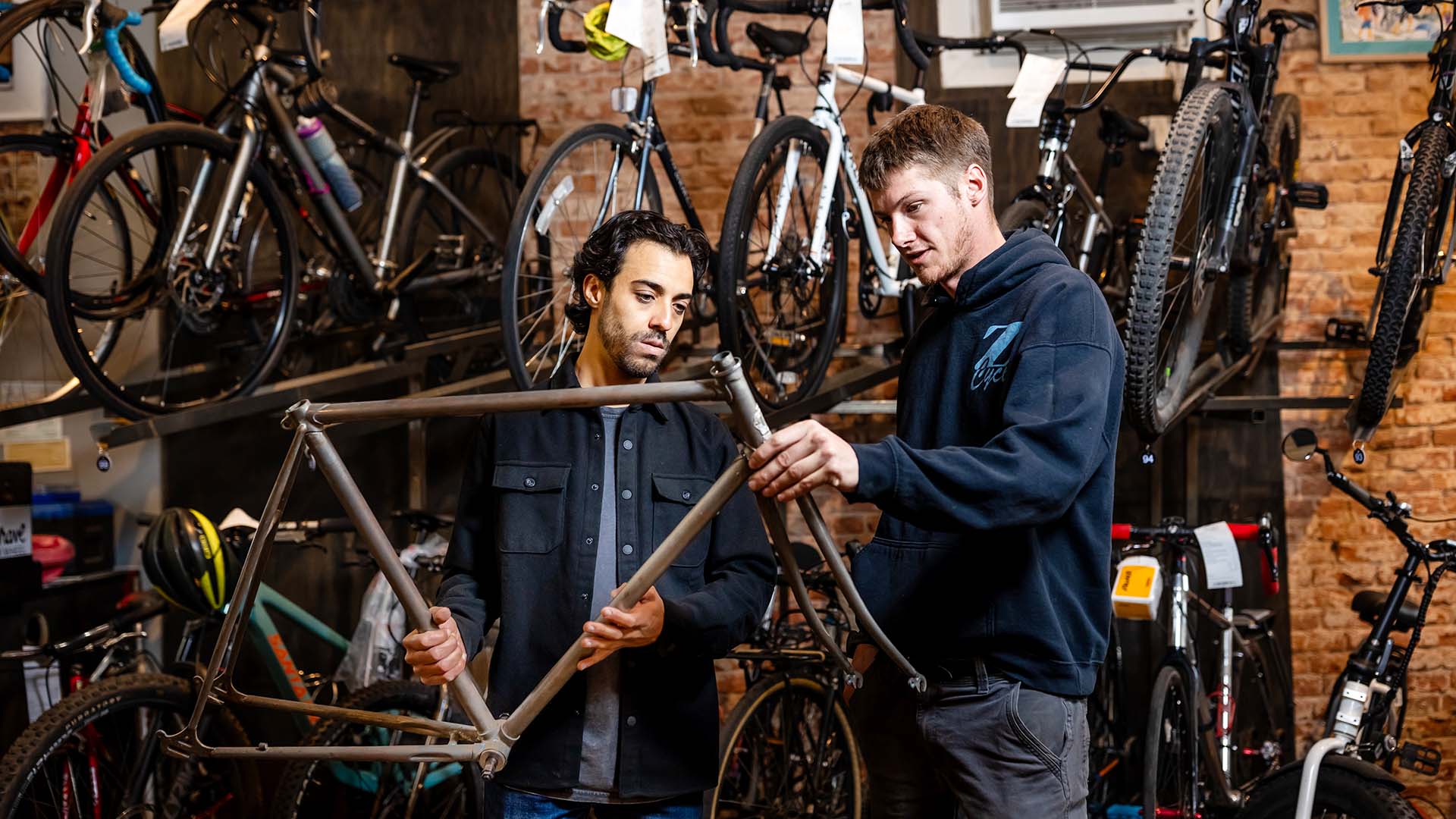Augmented reality and the future of recreation
Technology makes climbing, skiing and other recreational activities more dynamic, more safe and more accessible

If you’ve always wanted to be chased by a Pac-Man ghost while dangling off a rock face, you’ve come to the right place.
It’s called augmented reality climbing, and it’s part video game and part extreme sport. All you need to participate is a laptop, a projector and an internet connection – or a Campus Recreation membership at Metropolitan State University of Denver, which hosted its second-ever AR climbing intramural event Oct. 17 in the PE/Event Center, open to anyone in the community with a Campus Rec membership.
Massachusetts-based startup Randori pioneered the concept, and Campus Rec purchases an hourly subscription to activate the AR feature on the company’s website and project it onto a climbing wall. Games options include time trials for specific paths, hitting or avoiding specific spots on the wall, or staying in a projected box on the wall while avoiding 8-bit apparitions.
“This is one of the more unique events we’ve done,” said David Lamothe, assistant director of recreation and leadership for Campus Recreation. “It’s cool because it’s blending technology with a traditionally outdoor sport. If you had Wi-Fi and a small projector, you could actually do this on a boulder outdoors.”
Technology you can take outdoors is responsible for both advances in and the popularity of AR recreation.
Chris Jennings, professor of mobile and social media, credits the mobile app Pokemon Go with bringing existing AR technology mainstream. Launched in 2016, Pokemon Go allows users to locate and capture virtual creatures using their smartphone GPS and has reached more than 800 million downloads.
“This all started with geocaching, really. The whole idea of augmented reality and getting people outdoors was geocaching,” Jennings said. “With Pokemon Go coming out a few years ago, there were a lot of people who had no idea what AR was, and a whole new group of people was introduced to this technology that otherwise wouldn’t have known about it.”
In his work with Teaching with Primary Sources at MSU Denver, Jennings used similar location-based adventuring with an educational angle, giving students historical photos of places in Colorado and tasking them with tracking down the real-life location to take a new photo and compare the two.
“The idea was to get students outside using technology and get them to look at a primary source of an outdoor location. We can have students go downtown, walk the streets and look at old photos with trolley cars and compare the changes in the environment by doing things like that,” Jenning said.
Augmented reality can also make outdoor recreation safer. RideOn is a maker of AR ski goggles that show real-time speed, temperature and slope mapping in a heads-up display to warn skiers of upcoming dangers. That’s in addition to the ability to record and even stream live video and race through virtual rings.
Technology can add accessibility to recreation too. Jennings points to Moosejaw’s virtual reality app and Mammut’s Project360 as examples of technology providing access to adventures to anyone. Mammut sent four Sherpas up Mount Everest wearing 360-degree cameras, giving people with physical disabilities an interactive opportunity to virtually climb to the highest point on Earth.
“I can’t stress how much I appreciate Pokemon Go. When I saw that, I thought, ‘Yes, we finally have something to connect a lot of people to this technology,’” Jennings said. “Now that technology is catching up, this is becoming a lot more accessible and the tools are more user-friendly. I think we’re going to see a lot more of this.”







